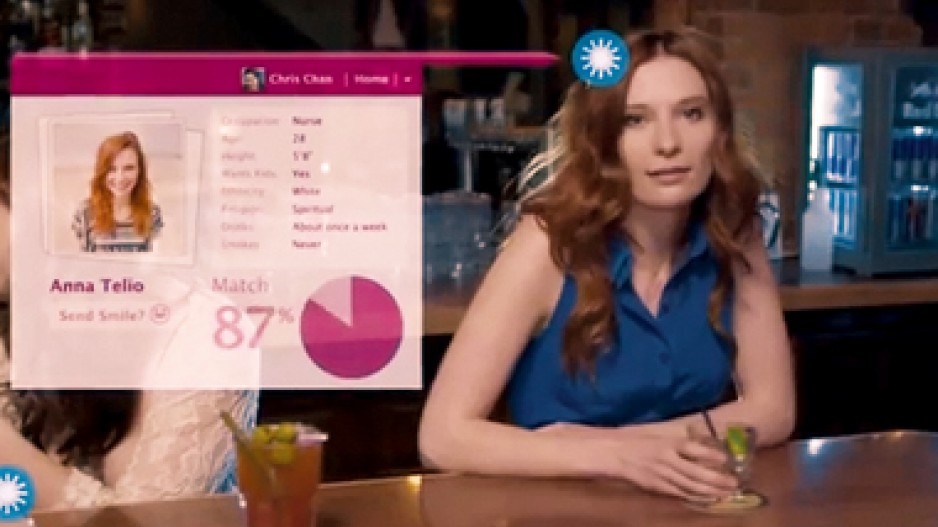Victoria inventor Edwin Braun started his journey of discovery with a simple goal: how could he help computer game players who were total strangers connect to play a game or two while commuting home on public transit?
But that quest has taken him light years beyond that seemingly modest aspiration to something he and his business partner Brian Purdy believe "will revolutionize the way we interact with other people.''
"Our technology does something that no one else can do right now," Braun said excitedly during a telephone interview from the office of their Victoria company, Deetectee Microsystems. "It allows anyone to securely identify anyone else at any time."
Braun's experience with software stems from developing special effects that have been used in movies ranging from The Avengers (where the laboratory in the opening scene is blown to bits) to destruction of the Lions Gate Bridge in Final Destination 5.
The basis of his newest invention is called single burst optical recognition, a technology that enables people to securely digitally identify others.
While optical recognition systems have been around for a few years now, Braun's is different in that it is the first to fully function in a mobile device environment. That means that anyone equipped with a smartphone, tablet or other mobile technology can scan, say, a name badge with an encoded chip and receive information about the person wearing it.
"Say you are a famous speaker on genetics at a convention," said Braun. "You want to display information — your white papers and other information about yourself. Anyone who has a smartphone could simply aim it at you and the information you want revealed would be available to them."
Individual's ID flashes in wearable computer
Deetectee's website provides a good "seeing is believing" video to demonstrate how the system works.
It shows a young man wearing Google glass — the recently introduced "wearable computer" — walking down the street seeing a person's identity flash up on the tiny eyeglass screen.
In another scenario the young man's identity is verified before he buys a coffee and later ascertains the identity of a patient that the young man, evidently a doctor, is about to treat.
When security is a concern, the technology would permit verification by comparing the smartphone image of the person you are scanning with a photograph stored on a server.
Braun said he has just finalized registration of his technology with the United States Patent Office in the last few weeks, which allows them to move out of what the pair calls their "semi-stealth" mode.
The two describe the invention as a form of "disruptive technology," where it disrupts or displaces traditional forms of technology such as existing optical recognition.
One area in which they see particularly promising potential is in mobile financial transactions or what has become known as the "electronic wallet." Current systems in use in Africa and Europe require mobile phone users to punch in a code or pin number to transfer funds to a vendor's account. With Deetectee's approach, those would become a thing of the past, replaced by a verified image of the purchaser.
An enthusiastic Purdy said that financial transactions provide an enormous opportunity to use Braun's software.
"By 2015 [it's predicted] that mobile transactions will be a $650 billion annual business. And the easier the payment system is, the better it is for the development of the whole chain of mobile payment."
Braun said big companies like Sony have been working in the optical recognition field for years but have yet to come up with a comparable technology that works within "the confined resources available in a smartphone or other mobile device."
He has gone in a completely different direction, he said. Rather than trying to cram computing power into a device, he took the route of connecting the device with a server that can deliver the required information or verify an identity on line.
To perform that function, "you don't need a super computer or unlimited memory (in the mobile device). You just need a fairly new smartphone with a camera and an app."
Braun and Purdy are counting on the world of developers to step up to the plate and invent a multitude of applications to meet whatever consumer need is identified.
For instance, the two could see the experience of dating simplified by a person say in a bar displaying their personal information including a phone number or conversely, giving a potential suitor the "brushoff" by withholding or not displaying the requisite info.
Both men believe it is just a matter of time before Apple, Microsoft or Google discover Deetectee's patented technology. While they did not provide specifics, they say they are now working to create opportunities to collaborate with the big name companies or perhaps to eventually sell their technology to them. •




